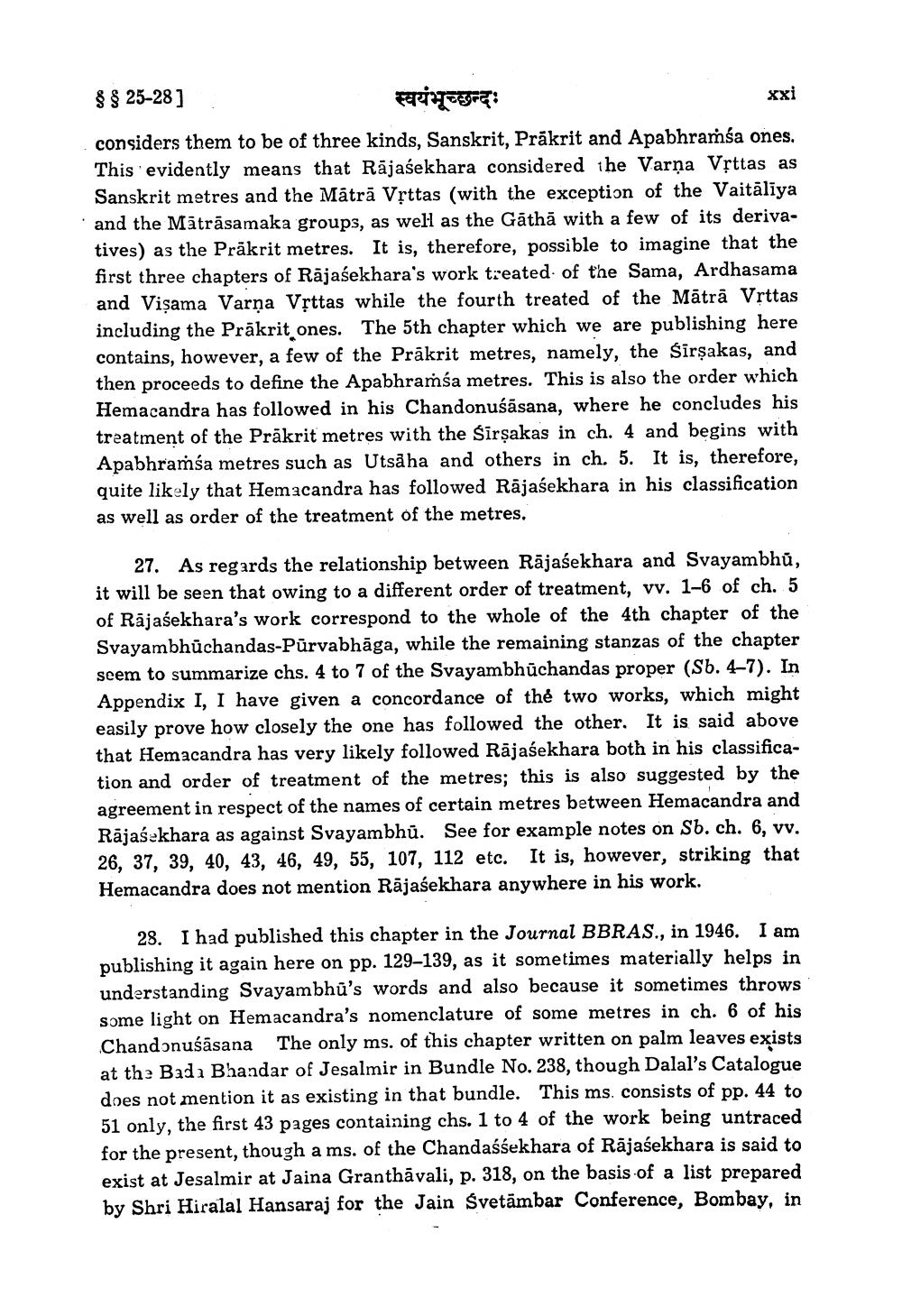________________
xxi
$ $ 25-28]
स्वयंभूच्छन्दः considers them to be of three kinds, Sanskrit, Prakrit and Apabhraśa ones. This evidently means that Rajasekhara considered the Varna Vșttas as Sanskrit metres and the Matrā Vșttas (with the exception of the Vaitāliya and the Mātrāsamaka groups, as well as the Gāthā with a few of its derivatives) as the Prākrit metres. It is, therefore, possible to imagine that the first three chapters of Rajasekhara's work treated of the Sama, Ardhasama and Vişama Varna Vrttas while the fourth treated of the Mātrā Vrttas including the Prākrit ones. The 5th chapter which we are publishing here contains, however, a few of the Prākrit metres, namely, the Sirsakas, and then proceeds to define the Apabhraṁsa metres. This is also the order which Hemacandra has followed in his Chandonuśāsana, where he concludes his treatment of the Prākrit metres with the Sīrşakas in ch. 4 and begins with Apabhramsa metres such as Utså ha and others in ch. 5. It is, therefore, quite likely that Hemacandra has followed Rajasekhara in his classification as well as order of the treatment of the metres.
27. As regards the relationship between Rājasekhara and Svayambhů, it will be seen that owing to a different order of treatment, vv. 1-6 of ch.5 of Rajasekhara's work correspond to the whole of the 4th chapter of the Svayambhūchandas-Pūrvabhāga, while the remaining stanzas of the chapter seem to summarize chs. 4 to 7 of the Svayambhūchandas proper (Sb. 4-7). In Appendix I, I have given a concordance of the two works, which might easily prove how closely the one has followed the other. It is said above that Hemacandra has very likely followed Rājasekhara both in his classification and order of treatment of the metres; this is also suggested by the agreement in respect of the names of certain metres between Hemacandra and Rājasekhara as against Svayambhū. See for example notes on Sb. ch. 6, vv. 26, 37, 39, 40, 43, 46, 49, 55, 107, 112 etc. It is, however, striking that Hemacandra does not mention Rājasekhara anywhere in his work.
28. I had published this chapter in the Journal BBRAS., in 1946. I am publishing it again here on pp. 129–139, as it sometimes materially helps in understanding Svayambhu's words and also because it sometimes throws some light on Hemacandra's nomenclature of some metres in ch. 6 of his Chandonuśasana The only ms. of this chapter written on palm leaves exists at the Badi Bhandar of Jesalmir in Bundle No. 238, though Dalal's Catalogue does not mention it as existing in that bundle. This ms. consists of pp. 44 to 51 only, the first 43 pages containing chs. 1 to 4 of the work being untraced for the present, though a ms. of the Chandaśśekhara of Rājasekhara is said to exist at Jesalmir at Jaina Granthāvali, p. 318, on the basis of a list prepared by Shri Hiralal Hansaraj for the Jain Svetāmbar Conference, Bombay, in




